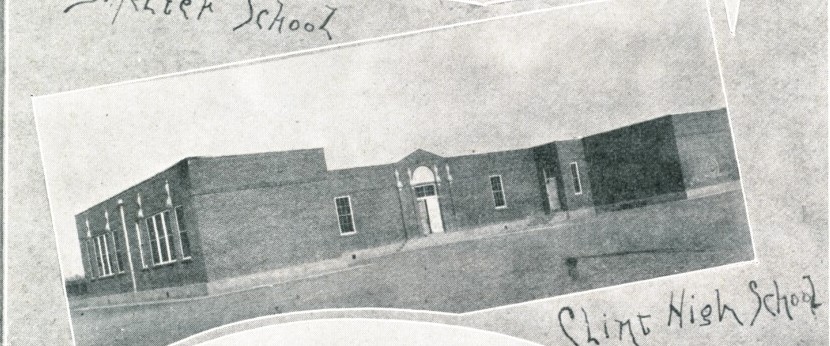The school was established in Clint in 1886 by the women of the village. A fire burned down the school in 1901. In 1910 a new school building was built. In 1913 and 1921, new schools building replaced each other. Clint got it’s name from Mary Clinton Collins who was one of the earliest settlers in Clint. In 1907 Collins established the Clint Post Office, she named Clint by shortening her maiden name, Clinton. Clint came along because of the railroads which ran thorough Clint starting in 1881. A fire burned down Clint High School and it reopened it doors in 1936. A new high school was built next to the old high school in 1964. A new elementary school was opened in 1978 named after farmer and Clint school board member, William David Surratt. Clint started to develop more east in the 1980s, it grew from just serving the kids at Clint and now the boundaries of the district include the town of Clint and some of Horizon City, Agua Dulce, Butterfield, Homestead Meadows North, Homestead Meadows South, Montana Vista and Morning Glory. The district’s second high school, Mountain View, opened in 1989. The district became an independent school district in 1929, with Albert Soane as the first Superintendent of Schools, he succeeded a Mr.Dickson who briefly acted as superintendent. Soane was succeeded by Sybil Bowie in 1933. Members of the 1929 school board included; Josephine Silvas Dalton Brooks, Leigh Osborn, Ramiel Young John, T.C. Turk, H.E. Vanderford, J.H. Bullard, and Edgar D. Brown. The first school board election was held in 1913, the first school board was composed of Mrs. A.E.Brown, Mrs. T.A. Halihan, and Mrs. M.H. Webb, this was one of the first all-women school board in Texas. Clint, like Fabens, did at one point educate Hispanics and Non-Hispanic separately. There was a Latin American School in 1925.
Joseph Longo
EPHS Curator

